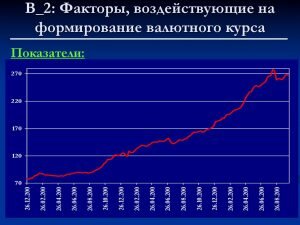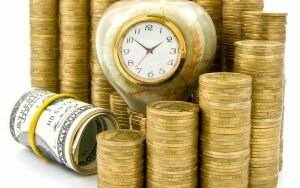The
term “market”, as used by economists, is an extension of the ancient idea of a
market as a place where people gather to buy and sell goods. In former days part of
a town was kept as the market or marketplace, and people would travel many
kilometres on special market-days in order to buy and sell various commodities.
Today, however, markets such as the world sugar market, the gold market and the
cotton market do not need to have any fixed geographical location. Such a market is
simply a set of conditions permitting buyers and sellers to work together.
In
a free market, competition takes place among sellers of the same commodity, and
among those who wish to buy that commodity. Such competition influences the prices
prevailing in the market. Prices inevitably fluctuate, and such fluctuations are
also affected by current supply and demand.
Whenever
people who are willing to sell a commodity contact people who are willing to buy it, a market for that commodity is created.
Buyers and sellers may meet in person, or they may communicate in some other
way: by telephone or through their agents. In a perfect market, communications are
easy, buyers and sellers are numerous and competition is completely free. In a
perfect market there can be only one price for any given commodity: the lowest price
which sellers will accept and the highest which consumers will pay. There are,
however, no really perfect markets, and each commodity market is subject to special
conditions. It can be said, however, that the price ruling in a market indicates the
point where supply and demand meet.
Vocabulary
extension
– поширення, продовження
ancient
– давній, древній
various
commodities – різноманітні товари
fixed geographical location –
фіксоване географічне розміщення
a
set of conditions –
набір умов
to
permit – дозволяти
to
prevail – переважати
inevitably
–
неминуче
in
person –
особисто
a
perfect market – досконалий ринок
I.
Complete the sentences using the text.
1.
The term “market is an
… .
2.
Markets such as the world
sugar market the gold market and the cotton market do not … .
3.
In a free market
competition takes place … .
4.
Buyers and sellers may
meet … .
5.
In a perfect market there
can be only … .
6.
The price ruling in a
market indicates … .
II.
Say whether these statements are true or false and if they are false, say why.
1.
The term market is an
extension of the ancient idea of a place where people gather to buy and sell goods.
2.
Today the world sugar
market has a fixed geographical location.
3.
In a free market
competition takes place among sellers of the same community.
4.
Buyers and sellers can
communicate only by telephone.
5.
In a perfect market
competition is completely free.
6.
There are no really
perfect markets.
7.
The price ruling in a
market indicates the point where supply and demand meet.
III.
Answer the questions, basing your answers on the text:
1.
What does the term
“market” mean?
2.
How can you define the
present world sugar market the gold market and the cotton market?
3.
In what market does
competition influence the prices?
4.
When is a market created?
5.
In what way can buyers and
sellers communicate?
6.
How can you define a
perfect market?
7.
What does the price ruling
in a market indicate?
Although
in a perfect market competition is unrestricted and sellers are numerous, free
competition and large numbers of sellers are not always available in the real world.
In some markets there may only be one seller or a very limited number of sellers.
Such a situation is called a “monopoly”, and may arise from a variety of
different causes. It is possible to distinguish in practice four kinds of monopoly.
State
planning and central control of the economy often mean that a state government has
the monopoly of important goods and services.
Some countries have state monopolies in basic commodities
like steel and transport, while other countries have monopolies in such
comparatively unimportant commodities as matches. Most national authorities
monopolise the postal services within their borders.
A
different kind of monopoly arises when a country, through geographical and geological circumstances, has control over major natural
resources or important services, as for example with Canadian nickel and the
Egyptian ownership of the Sues Canal. Such monopolies can be called natural
monopolies.
They
are very different from legal monopolies, where the law of a country permits certain producers, authors and inventors a full monopoly
over the sale of their own products.
These
three types of monopoly are distinct from the sole trading opportunities which take place because certain companies have obtained
complete control over particular commodities. This action is often called
“cornering the market” and is illegal in many countries. In the USA anti-trust
laws operate to restrict such activities, while in Britain the Monopolies Commission
examines all special arrangements and mergers
which might lead to undesirable monopolies.
Vocabulary
unrestricted
– необмежений
cause
– причина (спричиняти)
steel
– сталь (метал)
matches
– сірники
national
authorities – державні органи влади
within
their borders – у межах своїх кордонів
geographical
and geological circumstances – географічні та геологічні
обставини
to
corner – скуповувати товар зі спекулятивною
метою
market
corner – ринковий корнер
special
arrangements and mergers – особливі об’єднання.
I.
Complete the sentences using the text:
1.
A situation when there may
only be one seller or a very limited number of sellers is called … .
2.
It is possible to
distinguish in practice … .
3.
State planning and central
control of the economy mean … .
4.
Most national authorities
monopolise … .
5.
A geographical or
geological monopoly arises when a … .
6.
Three types of monopoly
are distinct from … .
7.
Cornering the market is
… .
II.
Say whether these statements are true or false and if they are false, say why.
1.
Free competition and large numbers of sellers are always
available in the real world.
2.
A «monopoly» is when
there is only one seller or a very limited number of sellers.
3.
It is possible to
distinguish two kinds of monopoly.
4.
State planning means that
a state government has the monopoly of important goods and services.
5.
Natural monopoly arises
when a country, through geographical and geological circumstances has control over
major natural resources or important services.
6.
Obtaining complete control
over particular commodities by certain companies is called «cornering the market».
7.
«Cornering the market»
is illegal in many countries.
III.
Answer the questions, basing your answers on the text:
1.
What are not always
available in the real world?
2.
What is a monopoly?
3.
What are the first three
kinds of monopoly?
4.
What examples of important
state monopolies are given?
5.
What are Canadian nickel
and the Suez Canal examples of?
6.
What are certain inventors
permitted by law to have?
7.
What happens when certain
companies obtain complete control over particular commodities?
8.
What do the Americans call
their anti-monopoly laws?
9.
What does Britain use to
restrict special arrangements.
Elasticity
of supply, as a response to changes in price, is related to demand. Economists
define “demand” as a consumer’s desire or want, together with his willingness
to pay for what he wants. We can say that demand is indicated by our willingness to
offer money for particular goods or services. Money has no value in itself, but
serves as a means of exchange between commodities, which do have a value to us.
People
very seldom have everything they want. Usually we have to decide carefully how we
spend out income. When we exercise our choice, we do so according to our personal
scale of preferences. In this scale of preferences essential commodities come first
(food, clothing, shelter, medical expenses etc.), then the kind of luxuries which
help us to be comfortable (telephone, special furniture, insurance
etc.), and finally those non-essentials which give us personal pleasure (holidays,
parties, visits to theatres or concerts, chocolates etc.). They may all seem
important but their true importance can be measured by deciding which we are
prepared to live without. Our decisions indicate our scale of preferences and
therefore our priorities.
Elasticity
of demand is a measure of the change in the quantity of a good, in response to
demand. The change in demand results from a change in price. Demand is inelastic
when a good is regarded as a basic necessity, but particularly elastic for non-essential
commodities. Accordingly, we buy basic necessities even if the prices rise steeply,
but we buy other things only when they are relatively cheap.
Vocabulary
elasticity
– еластичність
to
be related to – стосуватись
willingness
– готовність
a
means of exchange – засіб обміну
to
spend out income –витрачати доход
to
exercise one’s choice – здійснювати вибір
scale
of preferences –
шкала переваг
personal
pleasure –
особиста насолода
priority
– пріоритет
in
response to – у відповідь на
to
regard – вважати
accordingly
– таким чином
to
rise steeply – круто зростати
relatively
cheap – відносно дешеві
.
I.
Complete the sentences using the text:
1.
Economists define
“demand” as a … .
2.
Money has no value in
itself, but … .
3.
We spend out income
according to our … .
4.
Elasticity of demand is
… .
5.
Demand is inelastic when
… .
6.
We buy basic necessities
even if … .
II.
Answer the questions, basing your answers on the text:
1.
What is elasticity of
supply response to?
-
What
is the definition of demand?
-
How
is demand indicated?
-
What
is money?
-
What
do we do when we exercise our choice?
-
What
comes second in our scale of preferences?
-
What
is our third priority?
-
What
is elasticity of demand?
-
When
is demand inelastic?
III.
Say whether these statements are true or false and if they are false, say why.
1.
When people offer money
for particular goods, they indicate that a demand exists.
2.
Money is usually valuable
in itself.
3.
People do not usually have
everything they want.
4.
Basic needs come before
luxuries.
5.
Our decisions on how to
use our money show what we need most and what we are willing to do without.
6.
Demand for essential
commodities is always elastic.
In
most economic systems, the prices of the majority of goods and services do not
change over short periods of time. In some systems it is of course possible for an
individual to bargain over prices, because they are not fixed in advance. In general
terms, however, the individual cannot change the prices of the commodities he wants.
When planning his expenditure, he must therefore accept these fixed prices. He must
also pay the same fixed price no matter how many units he buys. A consumer will go
on buying bananas for as long as he continues to be satisfied. If he buys more, he
shows that his satisfaction is still greater than his dislike of losing money. With
each successive purchase, however, his satisfaction compensates less for the loss of
money.
A
point in time comes when the financial sacrifice is greater than the satisfaction of
eating bananas. The consumer will therefore stop buying bananas at the current price.
The bananas are unchanged; they are no better or
worse than before. Their marginal utility to the consumer
has, however, changed. If the price had been higher, he might have bought
fewer bananas; if the price had been lower, he might have bought more.
It is clear from this argument that the nature of a commodity remains
the same, but its utility
changes. This change indicates that a special relationship exists between goods and
services on the one hand, and a consumer and his
money on the other hand. The consumer’s
desire for a commodity tends to diminish
as he buys more units of that commodity. Economists call this tendency the Law of
Diminishing Marginal Utility.
Vocabulary
to
bargain over prices – домовитись про ціни
in
advance – наперед
to
satisfy – задовольнити
satisfaction
– задоволення
to
lose money – втрачати гроші
successive
purchase – вдала покупка
the
financial sacrifice – фінансова жертва
the
current price – існуюча ціна
marginal
utility – гранична корисність
to
diminish – зменшуватись
I.
Complete the sentences using the text:
1.
It is possible for an
individual to bargain … .
2.
A consumer will go on
buying bananas for … .
3.
If the price had been
higher, he … .
4.
The nature of a commodity
remains the same, but … .
5.
The tendency when the
consumer’s desire for a commodity tends to diminish as he buys more units of that
commodity is called …
II.
Answer the questions, basing your answers on the text:
1.
Prices are fixed in most
economic systems, but what is possible in some systems?
2.
What is the individual
generally unable to change?
3.
Under what conditions will a consumer go on buying a commodity?
4.
What does the consumer
show by buying more bananas?
5.
What happens with each
successive purchase?
6.
At what point will the
consumer stop buying the commodity at the current price?
7.
What remains unchanged
with each purchase?
8.
What has changed when this
point is reached?
9.
Under what conditions
might he have bought more?
10.
What does a consumer’s
desire tend to do?
III.
Say whether these statements are true or false and if they are false, say why.
1.
In the majority of systems prices are fixed but in the minority it is
possible to bargain.
2.
It is generally possible
for the individual to change the prices of the commodities he wants.
3.
We know that a
consumer’s satisfaction is greater than his financial sacrifice if he goes on
buying a commodity at the current price.
4.
When a consumer becomes
dissatisfied at paying the current price, he pays less.
5.
The financial sacrifice
becomes too great when the quality of the commodity gets worse.
6.
The consumer will probably
buy more if the price falls.
7.
If the prices rise, the
consumer will probably buy less.
8.
If the price remains the
same, the consumer will reach a point when his sacrifice is greater than
sat



